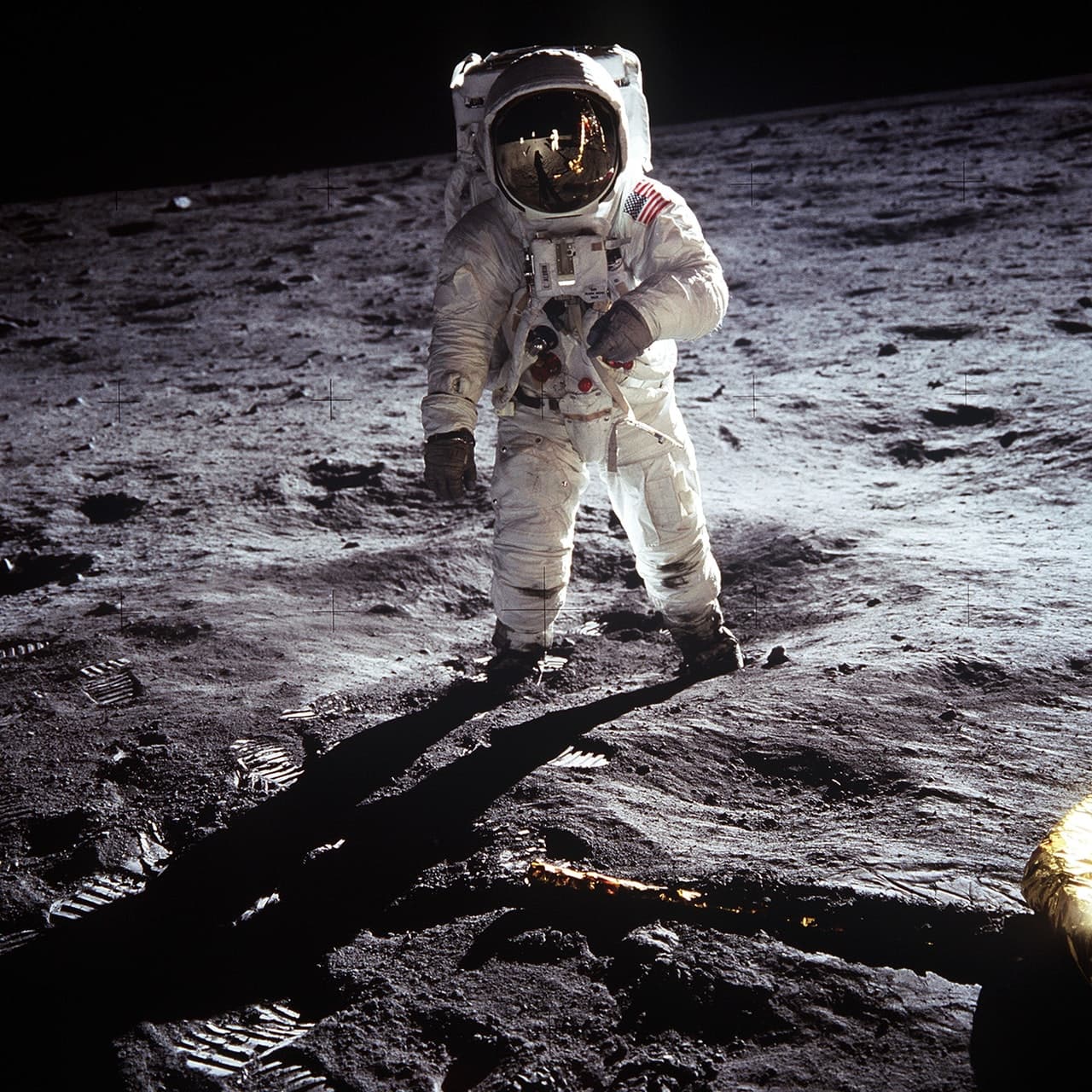Magnificent Desolation
– Dr. Bruce Lipton
Each year on July 20, 2019, the world commemorates the landing of the first humans on the Moon. To this day, it is probably the most audacious, improbable, and stupendous achievement of our country – and our greatest failure to date.
When President John Kennedy said, “We choose to go to the Moon,” in 1961, many people thought he was crazy. From a strictly logical perspective, we had absolutely no business putting three human beings in a tin can, strapping them onto a partially-controlled bomb and launching them into the seemingly endless and deadly abyss of space, 239,000 miles from home. Maybe it was the inspiring vision of a dynamic and persuasive leader; maybe it was the general paranoia brought on by the “cold war” with Russia, or maybe it was just our native human arrogance, but something inside our collective consciousness said, “Why not? Let’s go for it.”
Eight years, 49.4 billion dollars (that’s $490 billion in today’s dollars) and three lost lives later, Neil Armstrong and Buzz Aldrin became the first humans to step on the Moon, while Michael Collins kept the lights burning on the Command and Service Module. They returned safely four days later. Kennedy had a set the goal of completing this mission by the end of the decade. They beat it by four months.
“¢ Wearable medical monitors
“¢ Global Positioning System
“¢ Lasers
“¢ Solar panels
“¢ Miniaturization of communication devices
“¢ Wireless communication
“¢ Food storage
“¢ Cancer treatments
“¢ Improved computer systems and smaller, more powerful chips
“¢ Weather, communications, and agricultural satellites
It was also estimated that the effort to be the first nation to land a man on the Moon pumped about $52.5 billion into the U.S. economy over a seven-year period. That means it actually turned a profit, even before we calculate the benefits of all the technology that emerged from this great engineering effort.
As he bounced along the surface, Buzz Aldrin described the lunar landscape as “Beautiful, beautiful, magnificent desolation.” Magnificent, as he pondered the sheer power of the engineering feat and the labor of over 100,000 people to land him on this cold rock. Desolate because there was no sign of life as far as he could see.
The U.S. is ranked 27 in the world in Healthcare and Education, according to a World Bank study. We’re down from the not-so-great position of 6 in 1990.
The Organization for Economic Co-operation and Development (OECD) ranked the U.S. 40 of 72 in mathematics, 25 of 72 in science, and 24 of 72 in reading in 2015.
In 2015, the maternal mortality ratio in the U.S. was measured at more than twice the previous level in 2000, significantly higher than most industrialized countries – and heading in the wrong direction.
Among wealthy nations, a study on 2016 data ranked the United States first for child deaths by automobile accidents and firearms.
The Human Development Index (HDI), a composite statistic of life expectancy, education, and per capita income indicators, ranks the U.S. 24 out of 151 nations, putting us behind Slovenia and the Czech Republic to name a few.
According to the YouGov-Cambridge Globalism Project, the U.S. ranks third in industrialized countries for denial of science, especially human-caused climate change as documented by decades of satellite images. Our own president recently tweeted that human-caused climate change is a hoax invented by the Chinese.
If you are still reading this, you are probably like most of my readers – passionate about helping people learn. Whatever your job description or role in life, you’re a teacher at heart. You employ science and technology to fulfill your mission. You are, whether you’ve thought about it this way or not, a science worker. And it should really bother you that we have so little to show in the way of progress fifty years after landing on the Moon. Let’s relate this to something closer to home.
“¢ Failure to deliver a call to action at the end of the “main event.” People won’t connect the dots on their own; you need to tell them what should happen next.
“¢ Lack of reinforcement and refresher training to keep key concepts top-of-mind. The Forgetting Curve kicks in immediately after any learning event. You can only overcome it with intentional, regular reinforcement.
“¢ Flipping the 80/20 Rule in the wrong direction. The 80/20 rule tells us that eighty percent of the benefits of any effort come from twenty percent of the content. Sadly, many organizations place the emphasis on the wrong percentage of their content, which leads to a failure to achieve the design result. In the case of the Moon landing, the focus was on getting there first, rather than on leveraging what we’ve learned to advance life on Earth. Articulating the benefits or advantages of the system or process should always be a key objective of your training.

Book Your BrainyBotâ„¢ Discovery Session with Margie
Learn how you can transform the learning experience in your organization. Start your journey with 30-minute discovery session.